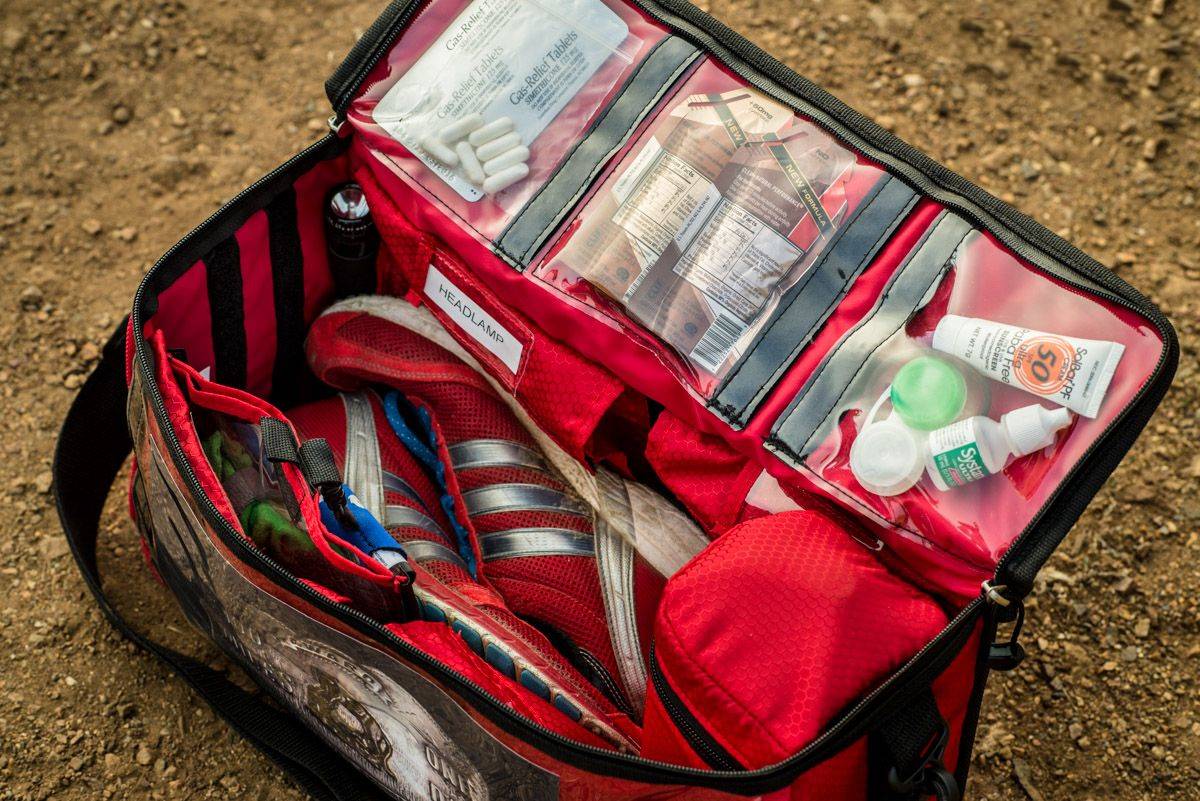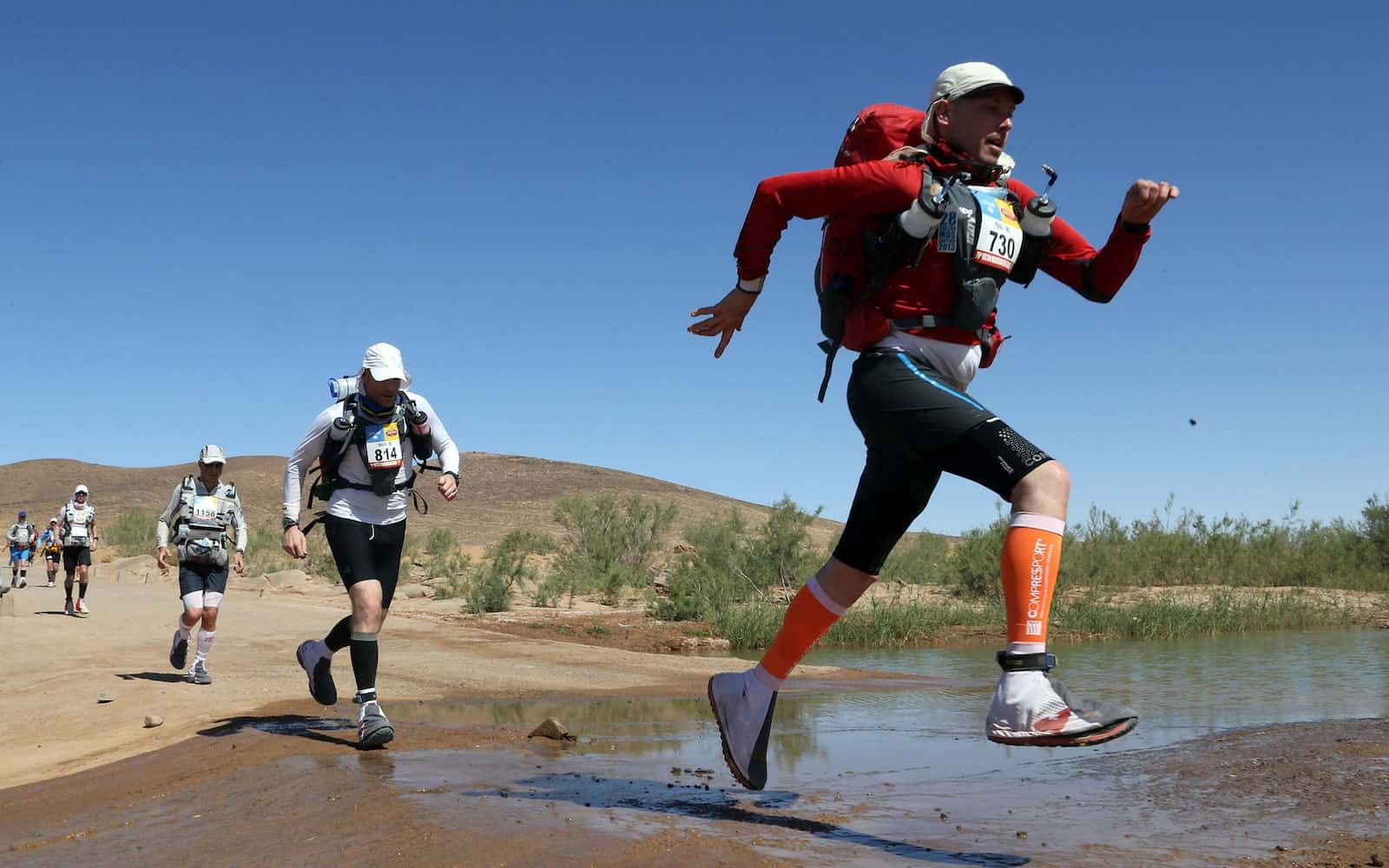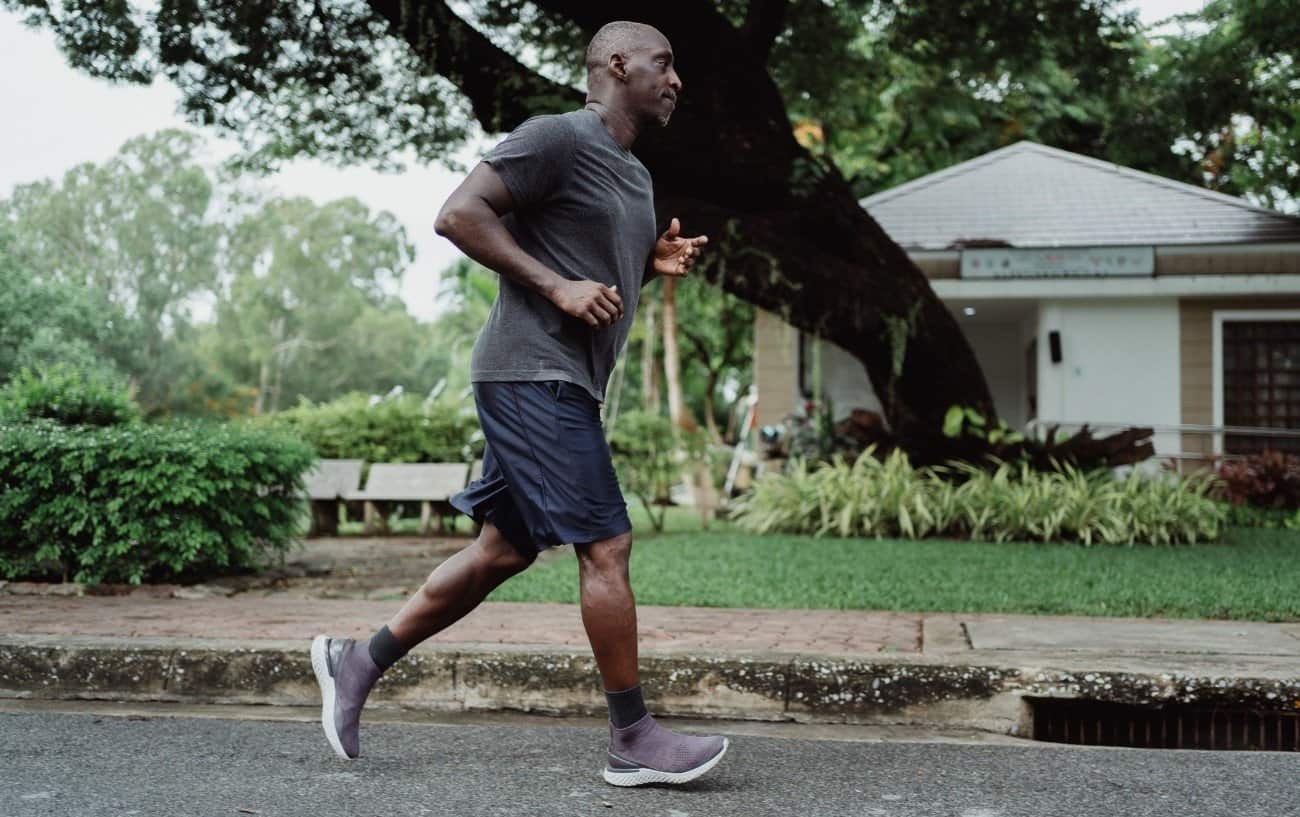Home>Misc>Featured>What To Put In Your Drop Bag For An Ultramarathon


Featured
What To Put In Your Drop Bag For An Ultramarathon
Published: October 6, 2023
Looking for the perfect drop bag for your ultramarathon? Check out our featured options to ensure you have everything you need during your race.
Introduction
Welcome to the world of ultramarathons, where endurance and determination are pushed to the limit. These challenging long-distance races push runners to go beyond the boundaries of a standard marathon, often covering distances of 50 kilometers or more. While training and preparation are vital for success in an ultramarathon, the strategic use of drop bags can be a game-changer for many runners.
A drop bag is a pre-packed bag or container that contains items a runner may need during an ultramarathon race. These bags are typically placed at designated aid stations along the race course and are used to replenish supplies, change clothing, or address any unforeseen issues that may arise during the race. The careful selection of items to include in a drop bag can greatly enhance a runner’s chances of success.
Whether you are a seasoned ultramarathoner or a beginner venturing into the world of endurance running, understanding the importance of a well-prepared drop bag is crucial. In this article, we will explore the significance of drop bags in ultramarathons and provide valuable insights on how to choose the right items for your race.
By strategically packing your drop bag, you can have peace of mind knowing that you have the necessary resources and gear readily available to tackle any challenges that come your way during the race. So, let’s dive in and discover the key elements to consider when assembling your drop bag for an ultramarathon.
Importance of a Drop Bag in Ultramarathons
Ultramarathons test the limits of the human body and mind, requiring runners to navigate through various terrains, climates, and distances. During these grueling races, having access to a well-stocked drop bag can be a game-changer for runners. Here are some key reasons why drop bags are crucial in ultramarathons:
1. Sustaining Energy and Hydration: Ultramarathons often span several hours, if not days, and maintaining optimal energy levels and hydration is essential. Drop bags allow runners to pack a variety of energy gels, snacks, electrolyte drinks, and water bottles to replenish their energy and stay hydrated along the course.
2. Changing Conditions and Gear: Ultramarathons can present unpredictable weather conditions and terrain variations. Having a drop bag with spare clothing, appropriate shoes, and extra socks allows runners to adapt to changing weather or unforeseen circumstances, such as rain or muddy trails.
3. Injury Prevention and First Aid: In endurance races, injuries and physical discomfort are not uncommon. Including basic first-aid supplies, such as band-aids, blister care, anti-inflammatory ointments, and pain relievers, in your drop bag can help you address minor issues and prevent them from escalating into major problems.
4. Mental Boost and Motivation: Ultramarathons can be mentally challenging, especially during long stretches of solitude. Packing motivational notes, music devices, or personal mementos in your drop bag can provide a much-needed mental boost when your spirits are low, helping you stay focused and determined.
5. Saving Time and Fatigue: Aid stations can become crowded during races, and waiting in line for supplies can waste precious time and energy. By having your own well-prepared drop bag, you can quickly restock and continue your race without relying solely on aid station provisions.
6. Personalized Nutrition and Preferences: Drop bags allow runners to customize their nutrition and cater to their specific dietary requirements or preferences. You can pack your favorite snacks, energy bars, or sports drinks, ensuring that you have familiar fuel options throughout the race.
7. Backup Equipment and Gear: Ultramarathons can be demanding on gear, and equipment failure can disrupt your race. Including spare headlamps, GPS devices, batteries, and other essential gear items in your drop bag can act as a safety net, ensuring you have a backup plan in case of emergencies.
Having a well-planned drop bag can make a remarkable difference in the success of an ultramarathon. It allows runners to address their specific needs and challenges, providing them with the necessary resources to keep going strong. In the following sections, we will delve into how to choose the right items for your drop bag and ensure a seamless race experience.
Choosing the Right Drop Bag
When it comes to selecting a drop bag for your ultramarathon, there are a few key factors to consider. A well-designed drop bag will not only keep your items organized but also be practical and durable. Here are some tips to help you choose the right drop bag:
1. Size and Capacity: Consider the length and difficulty of your ultramarathon when determining the size of your drop bag. It should be spacious enough to fit all your essentials while still being compact and manageable. Look for a bag with multiple compartments or pockets for easy organization.
2. Durability and Water Resistance: Ultramarathons can subject your gear to tough conditions, including rain, mud, and rough terrain. Choose a drop bag made of durable, water-resistant material to protect your items from the elements and ensure longevity.
3. Accessibility: Opt for a drop bag with easy access to its main compartments and pockets. Look for features like a wide opening, sturdy zippers, or Velcro closures to allow for quick and effortless retrieval of items during the race.
4. Reflective Elements: In races that extend into the night or in low-light conditions, having reflective elements on your drop bag can enhance your visibility to other runners and aid station staff. Look for bags that have reflective strips or a bright color scheme.
5. Lightweight and Portable: Remember that you will be carrying this bag for long distances, so choose a lightweight option that won’t add unnecessary weight or hinder your mobility. Consider features like padded shoulder straps or handles for easy and comfortable transportation.
6. Customizability: Some drop bags come with customizable features like adjustable dividers or removable organizers. These can be helpful for tailoring the bag to your specific needs and ensuring everything is arranged in a way that suits your preferences.
7. Personalization: Consider adding your name, race number, or unique symbols to your drop bag to make it easily recognizable among the sea of bags at aid stations. This can prevent confusion and ensure that your bag isn’t accidentally taken by another runner.
By taking these factors into account, you can choose a drop bag that will serve you well throughout your ultramarathon. Remember that functionality, durability, and accessibility are key when it comes to selecting the perfect bag to accompany you on your race.
Essential Items to Include in Your Drop Bag
When assembling your drop bag for an ultramarathon, it is crucial to include essential items that will support you throughout the race. These items can make a significant difference in your comfort, performance, and overall race experience. Here are some key items to consider including in your drop bag:
1. Nutrition and Hydration: Pack a variety of energy gels, electrolyte drinks, snacks, and water bottles to replenish your energy and stay hydrated. Choose products that you have tested and are familiar with to avoid any digestive issues during the race.
2. Clothing and Layers: Ultramarathons often involve varying weather conditions. Include spare clothing items, such as a lightweight jacket, shorts, socks, and a hat, to adapt to changing temperatures and keep your body comfortable throughout the race.
3. Foot Care Supplies: Keep your feet in good condition by packing blister pads or moleskin, extra socks, and a small container of foot powder. Addressing any foot discomfort or blisters promptly can prevent them from worsening and hampering your performance.
4. Lighting and Visibility: If the race extends into the night or low-light conditions, include a headlamp, spare batteries, and reflective gear to ensure your visibility to other runners and aid station staff.
5. Navigation and Communication: Depending on the race course and regulations, pack a reliable GPS device, compass, map, or smartphone with offline maps. Also, consider including a fully charged portable charger to keep your devices powered throughout the race.
6. First Aid and Medications: Include a basic first-aid kit with adhesive bandages, blister care supplies, anti-inflammatory ointments, and pain relievers. If you have any specific medical conditions, carry your required medications, such as inhalers or EpiPens.
7. Personal Motivation: Running an ultramarathon is a mental battle as much as a physical one. Include motivational notes, pictures, or small trinkets that hold personal significance to boost your morale and keep you motivated during the race.
8. Money and Identification: Carry some cash or a credit card and a form of identification, such as a driver’s license or a race ID, in case you need to purchase anything or require emergency assistance.
9. Miscellaneous Items: Depending on personal preferences and race-specific considerations, you may also want to include items like sunscreen, bug repellent, a small towel, a whistle, or a lightweight emergency blanket.
Remember to pack only essential items to avoid unnecessary weight in your drop bag. Tailor the contents based on the race terrain, weather conditions, and your personal needs. By having the right items readily available, your drop bag can provide you with the support and resources necessary to conquer the challenges of an ultramarathon.
Hydration and Nutrition Options
In ultramarathons, proper hydration and nutrition play a crucial role in fueling your body and ensuring optimal performance. By carefully considering your hydration and nutrition options, you can sustain energy levels and prevent fatigue during the race. Here are some tips to help you make the right choices:
Hydration:
– Carry a mix of water bottles and hydration packs to have multiple options for hydration. Disposable water bottles can be easily refilled at aid stations, while hydration packs with a bladder system allow for hands-free drinking on the go.
– Experiment and train with different types of electrolyte drinks to find the ones that work best for you. Look for drinks that provide essential minerals, such as sodium, potassium, and magnesium, to replenish electrolyte levels lost through sweat.
– Consider using a hydration system with a built-in filter if the race takes place in remote or unfamiliar locations. This allows you to refill your water supply from natural sources, providing a more sustainable and readily available hydration option.
– Don’t rely solely on aid station provisions for hydration. Plan ahead, and ensure you carry enough fluids to sustain yourself between aid stations, especially during long stretches where these stations may be farther apart.
Nutrition:
– Pack a variety of energy gels, bars, and snacks to provide a mix of carbohydrates, protein, and fats. These quick and easily digestible energy sources can help replenish glycogen stores and sustain your energy levels throughout the race.
– Incorporate real-food options into your nutrition strategy. Items like sandwiches, wraps, fruit, and nuts can add variety and provide a welcome break from sugary gels and bars.
– Take note of any specific dietary restrictions or preferences you have, and choose food options that align with those requirements. This will help avoid any gastrointestinal issues or discomfort during the race.
– During training, practice your nutrition strategy to understand how your body responds to different foods and energy sources. This will allow you to fine-tune your nutrition plan for the specific demands of the ultramarathon.
– Don’t forget to listen to your body’s cues during the race. Pay attention to hunger and satiety signals, and adjust your eating schedule accordingly. Remember that everyone’s nutritional needs vary, so what works for someone else may not work for you.
Hydration and nutrition are vital components of your race-day strategy. Each runner is unique, so it’s crucial to experiment with different options during training to determine what works best for your body. By staying properly hydrated and adequately fueled, you can power through the challenges of an ultramarathon and reach the finish line strong.
Clothing and Gear for Changing Conditions
Ultramarathons can present a wide range of weather conditions, making it essential to pack versatile clothing and gear that can adapt to changing circumstances. Here are some key considerations for selecting the right clothing and gear for changing conditions:
Layering:
– Dress in layers that can be easily added or removed to regulate your body temperature as conditions change. This allows you to stay comfortable without overheating or getting too cold.
– Choose moisture-wicking base layers to draw sweat away from your body and keep you dry. Avoid cotton, as it retains moisture and can lead to discomfort and chafing.
Temperature Control:
– Pack a lightweight, breathable jacket or windbreaker that can protect you from wind or light rain. Look for one that can be easily packed into your drop bag when not in use.
– Consider arm warmers or leg sleeves that can be easily rolled up or down to adjust to temperature changes during the race.
Footwear:
– Invest in high-quality, comfortable trail running shoes that suit the terrain and conditions of the race. Make sure you have trained in them and they provide the necessary support and traction.
– Pack an extra pair of socks to keep your feet dry and prevent blisters. Opt for moisture-wicking or merino wool socks that help regulate temperature and minimize friction.
Headwear and Eyewear:
– Protect yourself from the sun and heat with a moisture-wicking hat, visor, or bandana to shade your face and keep sweat out of your eyes.
– Consider wearing sunglasses or sport-specific eyewear to shield your eyes from UV rays, dust, and debris. Choose a pair with wrap-around styling to provide maximum coverage and stability during the race.
Compression Garments and Sleeves:
– Compression garments, such as calf sleeves or compression tights, can aid in muscle support, reducing fatigue and enhancing recovery. Experiment with different compression levels during training to find what works best for you.
Protection Against the Elements:
– Pack sunscreen, lip balm, and insect repellent to protect your skin from harmful UV rays and potential bug bites during the race.
– If the race conditions may include rain or cold temperatures, consider carrying a lightweight waterproof jacket and a beanie or gloves for added protection.
Remember that the clothing and gear you choose will heavily depend on the specific race conditions and terrain. Be prepared for various weather scenarios, and always check the race guidelines and weather forecast to make informed decisions. By selecting the right clothing and gear, you’ll be equipped to handle changing conditions and perform at your best throughout the ultramarathon.
First Aid and Medical Supplies
Ultramarathons can put a significant strain on your body, increasing the risk of minor injuries, discomfort, and other medical issues. It is essential to have a well-stocked first aid kit and necessary medical supplies in your drop bag to address any potential issues that may arise during the race. Here are some key items to include:
Basic First Aid Kit:
– Adhesive bandages of various sizes to cover blisters, small cuts, or abrasions.
– Sterile gauze pads or dressings to handle larger wounds or bleeding.
– Medical tape to secure dressings or to prevent chafing.
– Alcohol wipes or antiseptic solution for cleaning wounds.
– Tweezers for removing splinters or foreign objects.
– Safety pins or a small sewing kit for emergency gear repair.
Blister Care:
– Moleskin or blister pads to protect sensitive areas prone to blistering.
– Small scissors or nail clippers for trimming loose skin or nails that may cause further irritation.
– Lubricating or anti-chafing balms to prevent friction and blisters.
Pain Relief and Anti-Inflammatories:
– Over-the-counter pain relievers, such as acetaminophen or ibuprofen, to manage general aches or pain.
– Anti-inflammatory creams or ointments to reduce swelling and ease muscle soreness.
Medication and Personal Needs:
– If you have any pre-existing medical conditions, include necessary medications in your drop bag, such as inhalers or EpiPens.
– Any specific prescription medications or supplements recommended by your healthcare provider for the race duration.
Wound Care:
– Sterile saline solution or wound wash for cleaning deeper wounds or cuts.
– Sterile gloves to protect against cross-contamination.
– Antibiotic ointment to apply to wounds to prevent infection.
Extra Supplies:
– Emergency blanket or space blanket for insulation and protection against extreme temperatures.
– Elevation or compression bandages or wraps for addressing sprains or strains.
– Emergency whistle or signaling device to attract attention in case of emergencies.
Important Note: Ensure you have knowledge of basic first aid procedures or attend a certification course to understand how to use the supplies effectively during an emergency situation.
Remember, first aid and medical supplies are intended to address minor issues and provide temporary relief. If you experience any severe medical emergencies or conditions during the race, seek immediate medical attention from the race support staff or professionals available at aid stations. By including first aid and medical supplies in your drop bag, you’ll be well-prepared to handle common race-related injuries and discomfort, allowing you to continue your race with confidence and peace of mind.
Miscellaneous Items to Consider
When preparing your drop bag for an ultramarathon, it’s essential to think beyond the basics and consider miscellaneous items that can enhance your race experience and address unexpected situations. Here are some additional items to consider including in your drop bag:
Sunscreen: Protect yourself from harmful UV rays by packing a sunscreen with a high SPF rating. Apply it generously to exposed skin areas to prevent sunburn and long-term damage.
Bug Repellent: If you are racing in an area known for pesky insects, such as mosquitoes or ticks, include a bug repellent to keep them at bay and minimize the chances of bites or infections.
Towel: A small, lightweight towel can come in handy for wiping sweat, drying off after creek crossings, or even acting as a makeshift cooling towel by wetting and draping it around your neck on hot days.
Emergency Contact Information: Write down emergency contact numbers and any relevant medical information, such as allergies or chronic conditions, on a small card. Keep this card in a secure and easily accessible place within your drop bag.
Whistle: A small whistle can serve as a signaling device in case of emergencies. It can attract attention or assist in locating you if you are off-course or in need of assistance.
Hand Sanitizer: Keep a small bottle of hand sanitizer in your drop bag to clean your hands before eating or handling food items. This can help prevent the spread of germs and minimize the risk of gastrointestinal issues.
Extra Batteries: If your race involves using electronic devices, such as headlamps or GPS watches, include extra batteries to ensure that you can replace depleted ones during the race.
Cash or Card: Carry some cash or a credit card in case of unexpected expenses or if aid stations offer additional supplies for purchase. It’s always good to have a backup form of payment if needed.
Trash Bags: Pack a few small trash bags to keep your drop bag organized and to pack out any waste you generate during the race. This is an important aspect of Leave No Trace principles and shows respect for the environment.
Extra Ziplock Bags: Having a couple of extra ziplock bags can be useful for storing wet or dirty items, preventing them from impacting the rest of your gear or causing a mess.
Portable Phone Charger: Ensure you have a fully charged portable phone charger to keep your smartphone powered throughout the race, especially if you rely on it for GPS navigation or emergency communication.
Remember that every runner’s needs and race conditions may vary, so tailor your drop bag contents to suit your personal preferences and the specific demands of the race. While these miscellaneous items may seem small, they can make a significant difference in your comfort, convenience, and preparedness for any unforeseen circumstances or challenges that may arise during the ultramarathon.
Organizing and Packing Your Drop Bag
When it comes to organizing and packing your drop bag for an ultramarathon, efficiency and accessibility are key. By carefully planning and arranging your items, you can have everything you need at your fingertips during the race. Here are some guidelines to help you organize and pack your drop bag:
1. Categorize Your Items:
– Separate your items into categories, such as nutrition, clothing, first aid, gear, and miscellaneous items. This will help you visualize what you have and ensure that you don’t miss anything crucial.
2. Prioritize Essential Items:
– Place essential items that you know you will need during the race, such as nutrition and hydration supplies, at the top of your drop bag. This allows for quick and easy access during aid station stops.
3. Use Compartments or Bags:
– Utilize small compartments, Ziplock bags, or packing cubes within your drop bag to keep items organized and separated. This will prevent smaller items from getting lost or tangled together.
4. Label Your Bags or Pouches:
– Label your bags or pouches with the category of items they contain. This will help you quickly identify what you need and avoid wasting time searching through the entire bag.
5. Consider Accessibility:
– Place frequently used items, like gels or snacks, in easily accessible pockets or compartments. This way, you won’t have to dig through your entire drop bag when you need them on the go.
6. Pack Smartly:
– When packing clothing items, roll them up instead of folding to minimize wrinkles and save space. This also allows for easier visibility and access to individual items.
7. Protect Fragile Items:
– If you have any delicate or breakable items, such as electronics or sunglasses, consider using a padded or protective case to prevent damage during transport and handling.
8. Keep a Checklist:
– Create a checklist of all the items you plan to include in your drop bag. This will ensure that nothing is forgotten and will make the packing process more efficient.
9. Test and Refine:
– During your training runs, test your drop bag organization and packing. Assess if anything needs to be adjusted or modified for better efficiency and accessibility.
Remember that drop bags are usually placed at designated aid stations, so keep in mind the restrictions or guidelines set by the race organizers. It’s also a good idea to check if there are any specific drop bag weight limits or size restrictions that you need to adhere to.
By organizing and packing your drop bag methodically, you can save time and avoid frustration during the race. A well-organized drop bag ensures that you have everything you need readily available, allowing you to focus on the race and perform at your best.
Drop Bag Logistics on Race Day
On race day, drop bags can be a valuable resource to help support your needs and ensure a smooth and efficient race experience. Here are some important logistics to keep in mind when it comes to handling your drop bag on race day:
1. Know the Aid Station Locations:
– Familiarize yourself with the race course and the locations of the designated aid stations where you can access your drop bags. This will help you plan your strategy for when and where you will need specific items from your drop bag.
2. Pack and Label Your Drop Bag:
– Ensure that your drop bag is packed and ready well in advance of the race. Double-check that all essential items are included, and label your bag with your name and race number to easily identify it among other drop bags.
3. Time Your Drop Bag Placement:
– Coordinate with the race organizers to determine the designated drop bag placement time at each aid station. Arrive at the aid station with ample time to spare before the cutoff time to avoid any last-minute rush or confusion.
4. Follow Any Bag Requirements:
– Some races may have specific requirements for drop bags, such as size or weight limitations. Make sure to comply with these guidelines to ensure a smooth drop-off process and prevent any issues or delays.
5. Communicate with Aid Station Staff:
– When you arrive at an aid station, communicate with the staff and let them know which drop bag is yours. They will assist you in locating your bag and ensure that it is readily available for you to access when needed.
6. Maintain Order and Cleanliness:
– Keep the area around the drop bags tidy by disposing of any trash or waste responsibly. Be mindful of other runners’ drop bags and respect their organization and personal space.
7. Plan Your Departure Time:
– Once you have retrieved the necessary items from your drop bag, be mindful of the cutoff time and plan your departure from the aid station accordingly. Avoid lingering excessively to ensure you stay on pace and complete the race within the allotted time.
8. Retrieve Your Drop Bag After the Race:
– After crossing the finish line, check if there is a designated area for drop bag pick-up. Retrieve your drop bag promptly, as space may be limited, and other runners will be waiting to collect their belongings as well.
Remember to check the specific race rules and instructions regarding drop bag logistics, as they may vary depending on the event. It’s also important to be considerate of aid station volunteers by following their instructions and showing gratitude for their assistance.
By being well-prepared and organized with your drop bag logistics on race day, you can ensure a seamless and stress-free experience, allowing you to focus on the race itself and enjoy the journey to the finish line.
Conclusion
Preparing a well-equipped and well-organized drop bag for an ultramarathon is a strategic way to enhance your race experience and increase your chances of success. By carefully selecting the right items, such as hydration and nutrition options, clothing and gear for changing conditions, first aid and medical supplies, and other miscellaneous items, you can be better prepared for the physical and mental challenges that ultramarathons present.
Remember to pack items that suit your individual needs, preferences, and the specific demands of the race course. Test and refine your drop bag during training to ensure everything is in order, and consider the logistics involved in handling your drop bag on race day.
Whether you’re a seasoned ultramarathoner or just getting started, an efficient drop bag can provide you with peace of mind and the necessary resources to overcome any obstacles that may come your way. The careful organization and packing of your drop bag can save you time, prevent unnecessary stress, and contribute to a successful race.
So, plan ahead, pack smartly, and optimize your drop bag to maximize your performance and enjoyment in ultramarathons. With a well-prepared drop bag by your side, you can confidently tackle the challenges of the race and celebrate your achievements as you cross the finish line.









